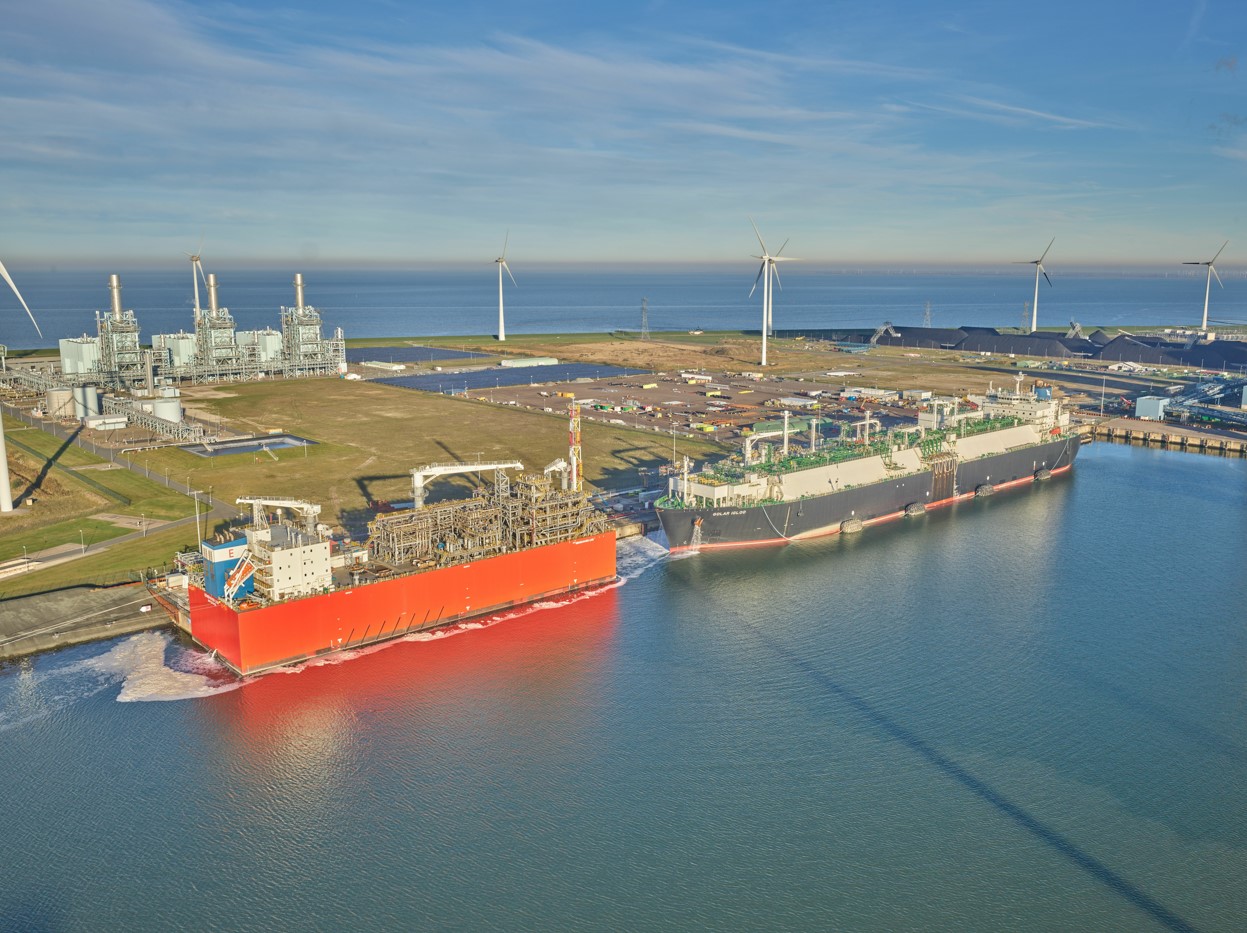Gasunie said it had completed all the planned work at its LNG hub in the Dutch port of Eemshaven.
The terminal features two chartered FSRUs, including the 26,000-cbm barge-based FSRU Eemshaven LNG and the 170,000-cbm Energos Igloo.
It has a capacity of 8 billion cubic meters per year and supplies natural gas to capacity holders Shell, Czech utility CEZ, and France’s Engie.
EemsEnergyTerminal, a unit of Gasunie, started delivering regasified LNG to the Dutch grid in a record time in September, but the facility did not deliver gas to the grid during two periods since the launch.
Gasunie closed the facility for maintenance and to complete the connection between the FSRUs and the heat connection during November and December last year.
After that, the facility was unable to deliver gas from January 13, 2023 due to an outage at RWE and the unavailability of the heat connection.
EemsEnergyTerminal, a unit of Gasunie, resumed sendout to the grid on February 6.
Gasunie previously said that it expected to reach full capacity on March 1.
“Actually, we cannot say that this will be achieved March 1 or March 31 or any other date,” a Gasunie spokeswoman told LNG Prime on Tuesday.
“The 8 billion cbm is a total send-out capacity as well as based on customers bringing cargoes on an annual basis. For example, it is obvious that more capacity is available in the summer, because of the warm sea water,” she said.
“We recently reached a milestone by completing the planned work. And are now going ‘ full-speed’ ahead,” the spokeswoman said.
Besides these activities, Gasunie is working to further boost capacity at the Eemshaven LNG hub, as well as adding a fourth tank at the Gate terminal in Rotterdam which it operates along Vopak.
Gasunie also decided that a new FSRU-based terminal in the port of Terneuzen is not feasible in the short term.
The Dutch firm recently said that the ambition of EemsEnergyTerminal is to be able to handle 9 bcm of natural gas before the end of this year, and then to grow to 10 bcm.
“This is mainly based on ‘technical optimization’ of the existing installations. So a kind of technical debottlenecking, but also from optimization of schedules that will allow the FSRU’s to convert more LNG to natural gas,” the spokeswoman said.
As per the Gate terminal, one of Europe’s main LNG hubs received a permit in September to add the fourth tank and boost regasification capacity up to 20 bcm per year.
The terminal is currently capable to regasify about 16 bcm per year.
(Article updated and corrected to say that Gasunie completed all the planned work.)

